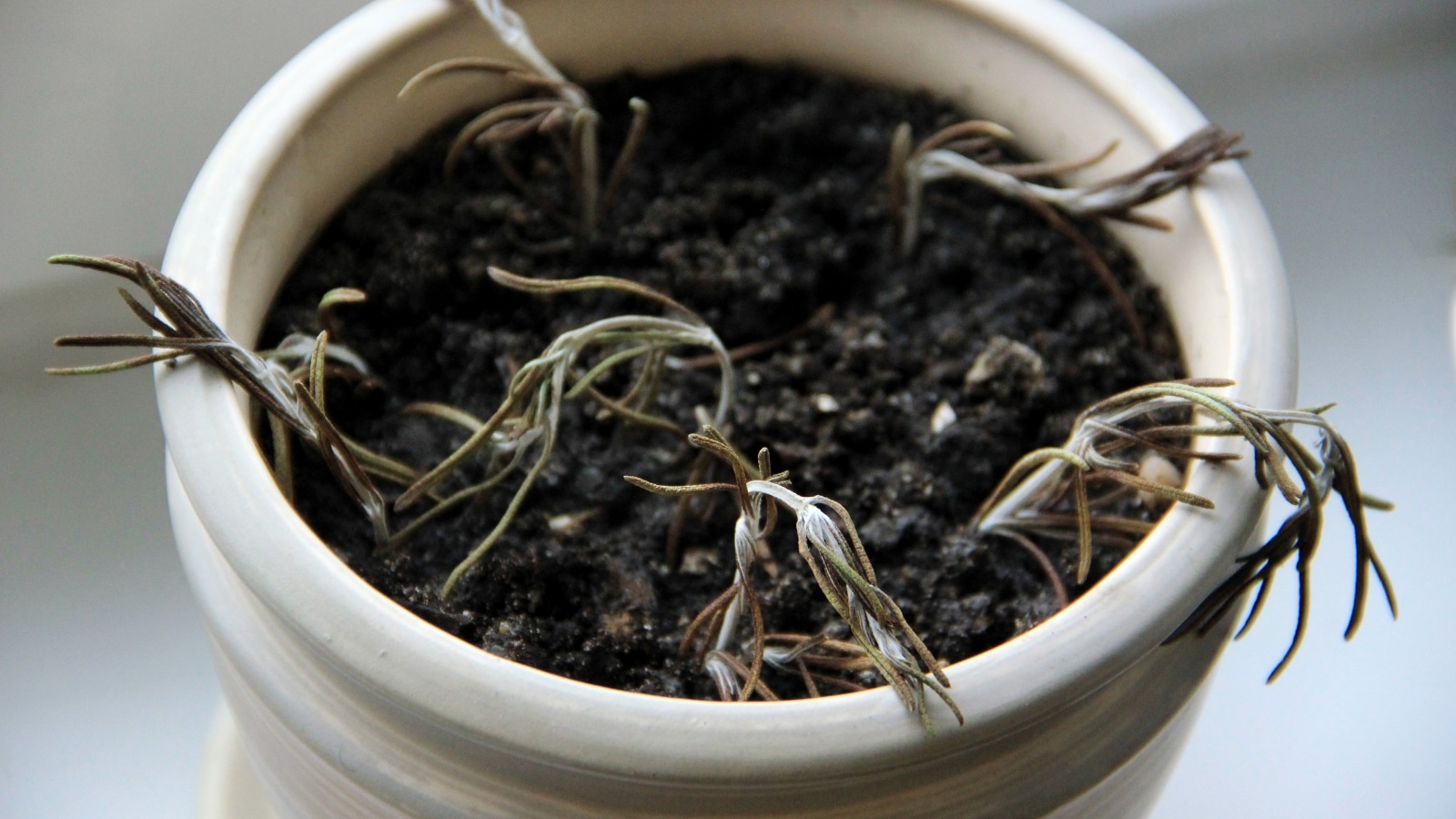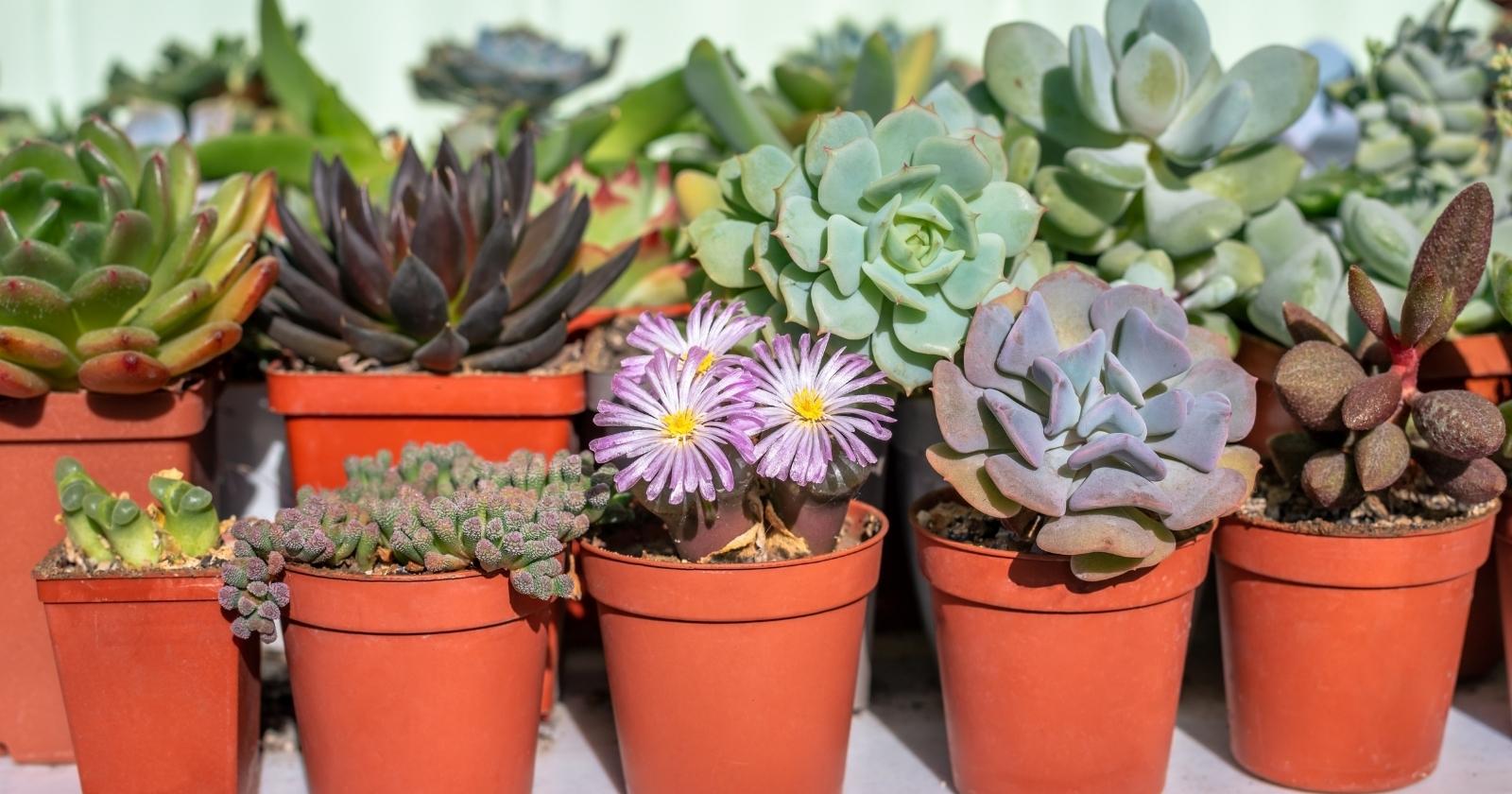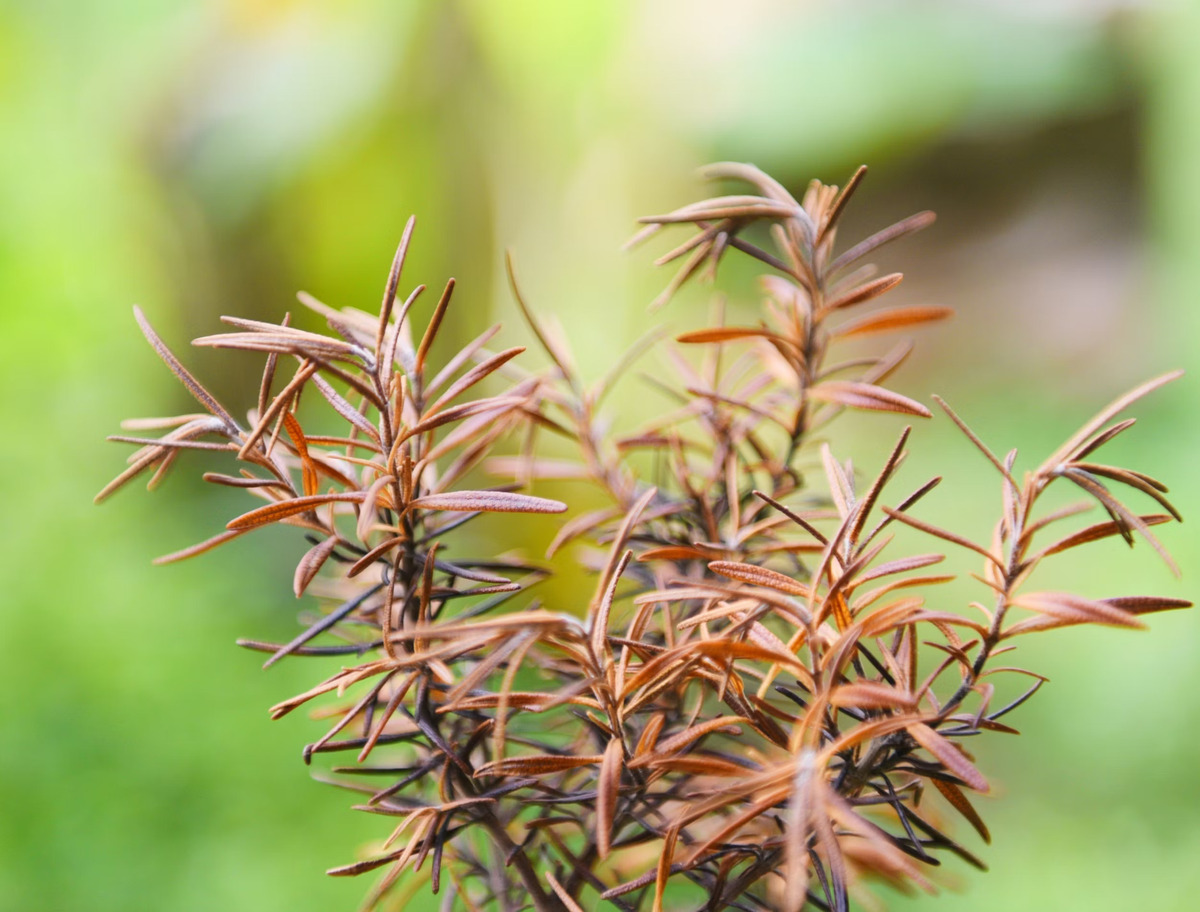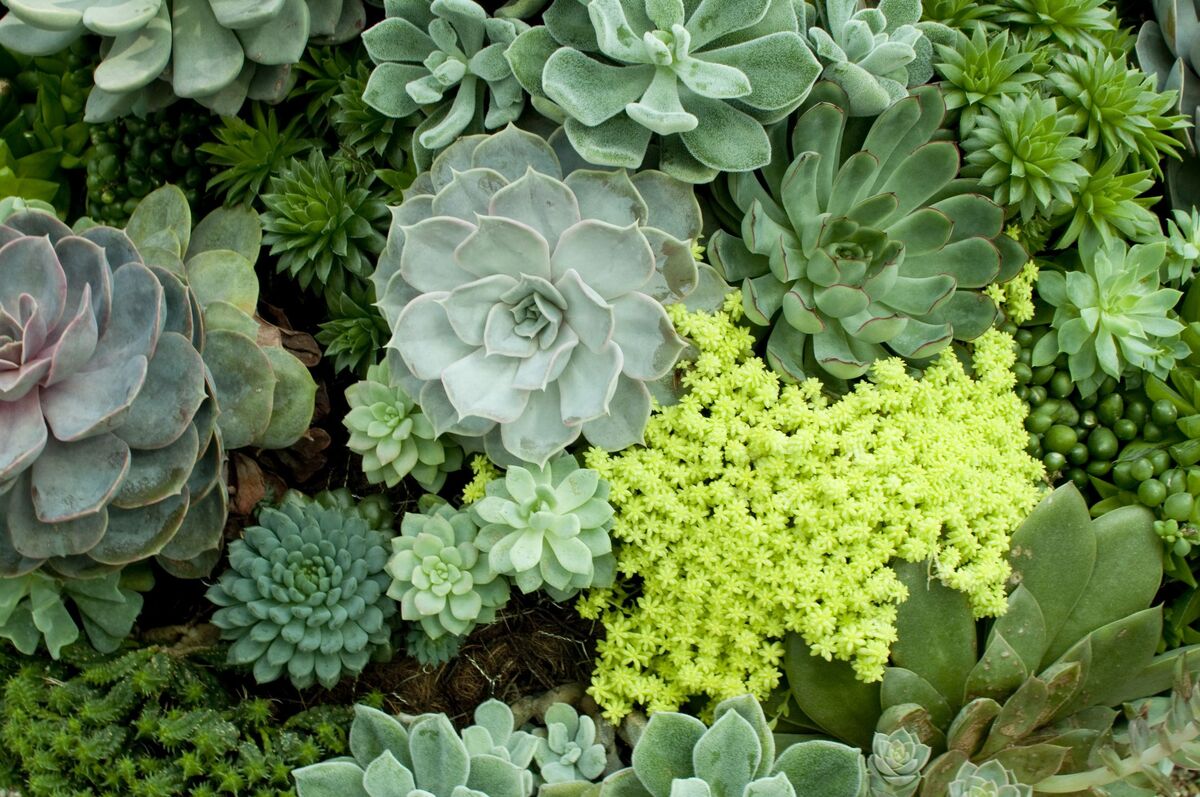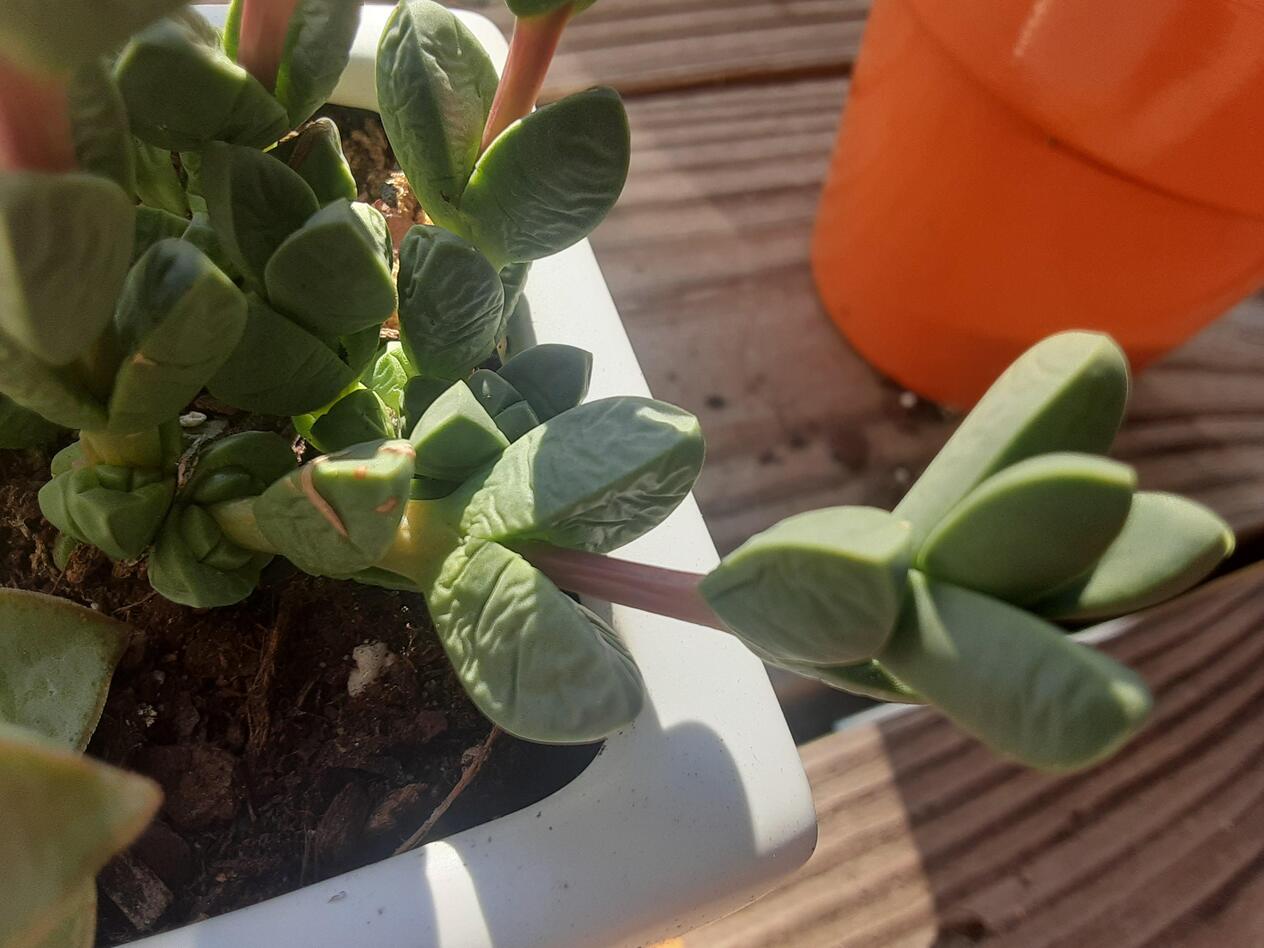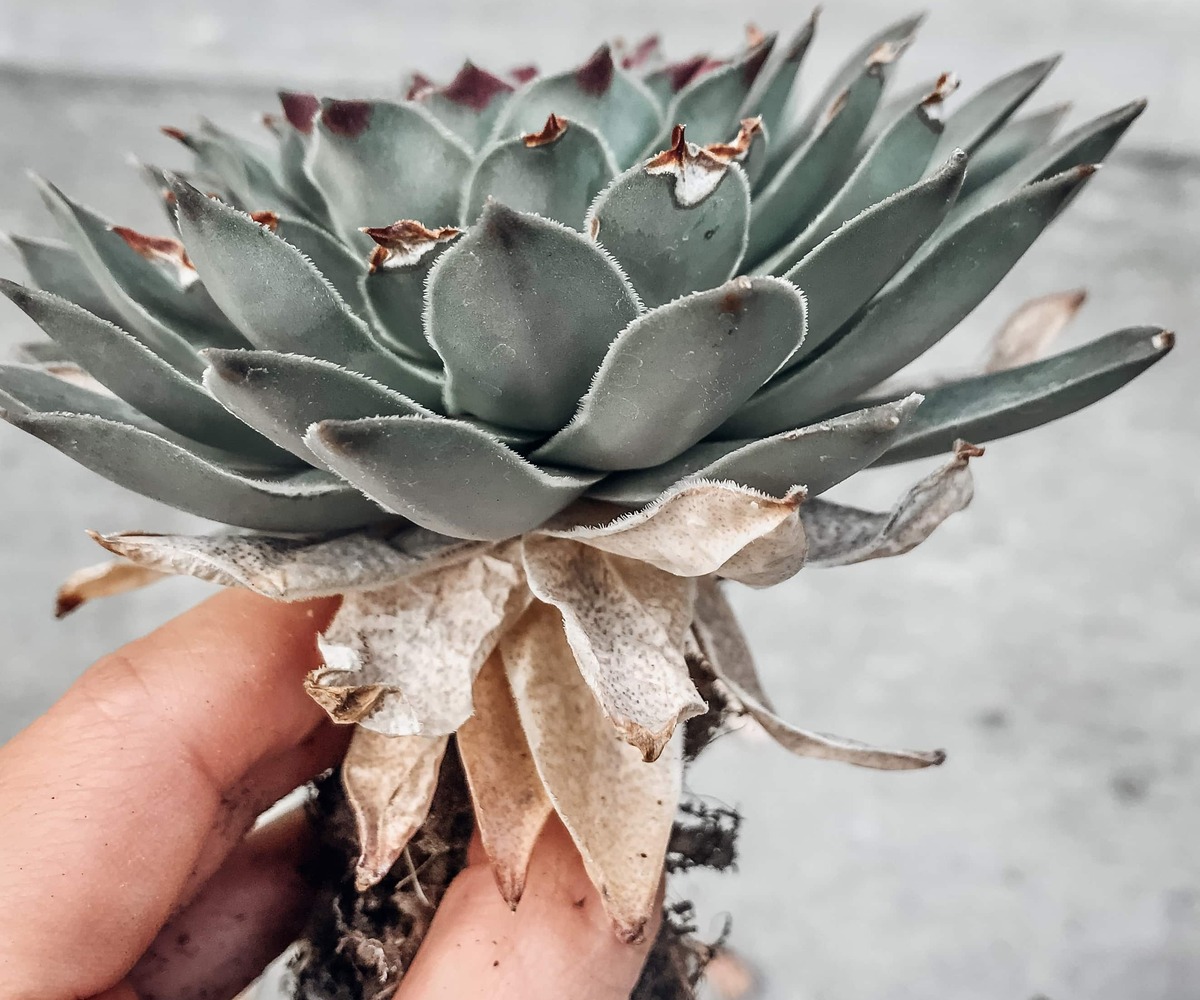Home>Types of Gardening>Ornamental Gardening>Why Do Succulents Turn Yellow
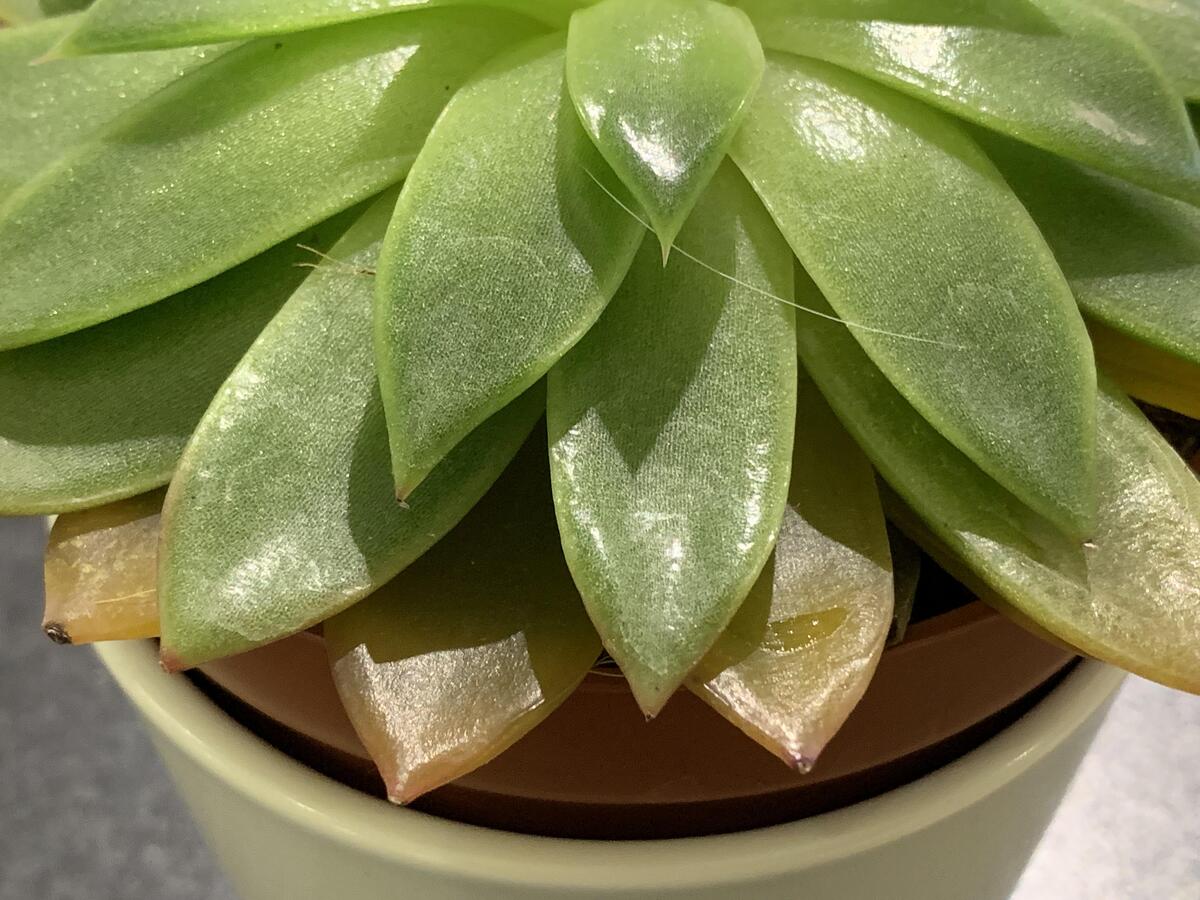

Ornamental Gardening
Why Do Succulents Turn Yellow
Modified: January 22, 2024
Learn why succulents turn yellow and how to prevent it. Get expert tips and advice on ornamental gardening to keep your plants healthy and vibrant.
(Many of the links in this article redirect to a specific reviewed product. Your purchase of these products through affiliate links helps to generate commission for Chicagolandgardening.com, at no extra cost. Learn more)
Table of Contents
Introduction
Welcome to the wonderful world of ornamental gardening and the fascinating realm of succulents! If you’ve ever been captivated by the unique and beautiful foliage of succulent plants, you’re not alone. These resilient and drought-tolerant plants have gained popularity among gardeners and plant enthusiasts alike.
Succulents are a diverse group of plants that have evolved to survive in arid environments by storing water in their leaves, stems, or roots. They come in a wide range of shapes, sizes, and colors, making them versatile additions to any garden or indoor space. The appeal of succulents lies not only in their stunning aesthetic but also in their easy care requirements.
However, one common challenge that many succulent growers face is when their precious plants start turning yellow. This discoloration can be alarming, especially for new gardeners who may not be familiar with the various factors that can contribute to this change. But fear not, for in this article, we will explore the potential causes behind why your succulents may be turning yellow and provide some helpful tips on how to address these issues.
It’s essential to keep in mind that succulents are resilient plants, and with a little bit of care and attention, they can quickly recover from distress. By understanding the various environmental factors, watering practices, pests and diseases, nutritional deficiencies, and other aspects that can impact the health of your succulents, you’ll be better equipped to ensure their vibrant and flourishing growth.
So, without further ado, let’s dive into the world of succulents and explore the reasons behind why these fascinating plants may turn yellow. Understanding these factors will empower you to take the necessary steps to maintain healthy and vibrant succulents in your garden or indoor spaces.
Understanding Succulents
Before we delve into the reasons why succulents turn yellow, it’s important to first understand the unique characteristics and needs of these plants. Succulents belong to a diverse group of plant species that have adapted to survive in harsh, arid conditions. They have specialized structures, such as thick, fleshy leaves, stems, or roots, that allow them to store water for extended periods of time.
These water reservoirs within succulents help them to endure periods of drought, making them highly drought-tolerant plants. Their ability to retain water also means they prefer a well-draining soil that allows excess moisture to escape. In their natural habitats, succulents often grow in sandy or rocky soils, where water quickly drains away.
Additionally, succulents have evolved to thrive in regions with ample sunlight. They typically have adaptations like a waxy coating or a unique leaf structure that helps to reduce water loss through evaporation. These adaptations allow succulents to withstand high temperatures and intense sunlight.
Understanding these fundamental characteristics of succulents can help us better grasp why they may turn yellow. Keep in mind that while succulents are resilient and can tolerate challenging conditions, they still require the right care to thrive.
Next, we will explore the various environmental factors that can contribute to the yellowing of succulent plants. By addressing these factors, you can ensure that your succulents stay healthy and vibrant, adding beauty and intrigue to your garden or indoor space.
Environmental Factors
Environmental factors play a crucial role in the health and well-being of succulent plants. The elements in their surroundings can impact their growth and even cause them to turn yellow. Let’s take a closer look at some of these environmental factors:
Light Exposure: Succulents thrive in bright, indirect sunlight. While they tolerate some direct sunlight, prolonged exposure to intense rays can lead to sunburn and yellowing of leaves. On the other hand, insufficient light can cause elongated, stretched growth and eventual yellowing. Finding the right balance of light is key to maintaining the vibrant green color of your succulents.
Temperature: Succulents generally prefer warm temperatures ranging from 60°F to 80°F (15°C to 27°C). Drastic temperature fluctuations or extended exposure to extreme heat or cold can stress the plant, resulting in yellowing foliage. Protect your succulents from drafts and provide adequate insulation during colder months to help them thrive.
Humidity: Succulents are adapted to low-humidity environments, so excessive moisture in the air can lead to problems. High humidity levels can create a breeding ground for fungal diseases and make the soil excessively damp, leading to root rot. Ensure proper air circulation and avoid overwatering to prevent yellowing caused by high humidity.
Airflow and Ventilation: Proper airflow is essential for succulents to thrive. Stagnant air can promote fungal growth, pest infestation, and hinder the plant’s ability to transpire and exchange gases. Insufficient ventilation can contribute to yellowing, especially in indoor environments. Place your succulents in well-ventilated areas or use fans to promote airflow.
Altitude: Altitude can have an impact on the health of succulents. Different succulent species have specific altitudinal preferences. Some species thrive at higher elevations, while others prefer lower altitudes. If you’re growing mountain succulents at sea level or vice versa, the change in altitude may cause stress and lead to yellowing leaves. Research the altitude preferences of your succulent species and adjust growing conditions accordingly.
By considering these environmental factors and making necessary adjustments, you can create an optimal growing environment for your succulents and help prevent yellowing. Next, we will explore specific issues related to watering practices and their effects on succulents.
Overwatering
Overwatering is one of the most common mistakes made when caring for succulents. While it may seem counterintuitive, succulents are prone to damage from excessive moisture. Overwatering can lead to root rot, which in turn causes yellowing, wilting, and even the death of the plant. Here are a few reasons why overwatering can be detrimental to succulents:
Root Suffocation: Succulent roots require oxygen to function properly. When the soil is constantly saturated with water, the roots can suffocate, leading to root rot. As a result, the plant’s ability to absorb nutrients and water is compromised, resulting in yellowing leaves.
Susceptibility to Disease: Excessive moisture creates a favorable environment for fungal and bacterial diseases. As the roots weaken due to overwatering, they become more susceptible to pathogen attack. Fungal infections can cause yellow spots or patches on the leaves, indicating the presence of disease.
Limited Water Uptake: Overwatered succulents can suffer from impaired water uptake. When soil is constantly wet, the roots become waterlogged and lose their ability to absorb water efficiently. This can lead to yellowing leaves as the plant struggles to access the necessary moisture.
To avoid overwatering, it’s crucial to establish a proper watering routine for your succulents. Allow the soil to dry completely between waterings, and only provide water when the top inch (2.5 cm) of the soil feels dry to the touch. When watering, ensure that water drains out of the pot’s drainage holes, preventing excess moisture from accumulating.
In addition, choose well-draining soil specifically formulated for cacti and succulents. These soils have excellent drainage properties and prevent water from pooling around the roots. Remember, it’s always better to underwater than overwater your succulents.
Now that we’ve explored overwatering and its effects on succulents, let’s shift our focus to the opposite issue: underwatering.
Underwatering
While overwatering can cause yellowing in succulents, underwatering can also lead to similar symptoms. Succulents are adapted to survive in arid environments with limited water availability. However, depriving them of water for extended periods can result in stress and yellowing. Here are some reasons why underwatering can be detrimental to succulents:
Dehydration: Succulents store water in their leaves, stems, or roots to survive through periods of drought. When they don’t receive enough water, these water reservoirs become depleted, leading to dehydration. As a result, the leaves may turn yellow or become shriveled.
Reduced Nutrient Uptake: Just like any other plant, succulents require water to absorb nutrients from the soil. When the plant is underwatered, the roots are unable to uptake the necessary nutrients, leading to nutrient deficiencies. This can manifest as yellowing leaves due to a lack of essential nutrients.
Stunted Growth: Underwatered succulents often exhibit stunted growth as a result of their survival mechanism. When water is scarce, succulents prioritize conserving energy and water by reducing their growth rate. This can lead to yellowing and limited new growth.
To prevent underwatering, it’s important to establish a regular watering schedule for your succulents. While they are adapted to survive drought, they still require periodic watering. As a general rule, water your succulents when the top inch (2.5 cm) of soil is dry to the touch. Adjust the frequency of watering based on the specific needs of your succulent species and the prevailing climate conditions.
When watering, be sure to thoroughly saturate the soil, allowing excess water to drain out. This ensures that the water reaches the deeper root system, providing adequate hydration to the entire plant. However, avoid leaving your succulents sitting in standing water, as this can lead to root rot.
In addition to regular watering, it’s important to observe your succulents for any signs of dehydration. If you notice the leaves becoming excessively wrinkled or the plant appearing wilted, it may be an indication that your succulent requires more water.
Now that we’ve covered the effects of both overwatering and underwatering on succulents, let’s move on to exploring how pests and diseases can contribute to yellowing leaves.
Pests and Diseases
Succulents, just like any other plant, are susceptible to pests and diseases that can cause yellowing leaves. Pests and diseases can weaken the plant’s immune system, disrupt its normal functions, and lead to discoloration. Here are a few common culprits:
Mealybugs: These small, white, fluffy insects are a common pest in succulent plants. They feed on the sap of the plant, causing damage to the leaves and stems. Mealybug infestations can lead to yellowing, wilting, and a decline in overall plant health.
Aphids: Aphids are tiny, soft-bodied insects that can cluster on the leaves and stems of succulents, causing damage. They feed by piercing the plant’s tissue and extracting sap, which can result in yellowing, curling, and distorted growth.
Fungal Infections: Fungi thrive in humid conditions and can cause various diseases in succulents, such as leaf spots, rot, and blight. These infections can manifest as yellow or brown spots on the leaves, often surrounded by a halo. Fungal diseases are often caused by overwatering or poor air circulation.
Bacterial Infections: Bacteria can also infect succulents, causing diseases such as soft rot and bacterial leaf spot. These infections can lead to yellowing, wilting, and decay of the affected plant parts. Bacterial infections are often spread through wounds or cuts on the plant.
Preventing and managing pest and disease issues is crucial to keep your succulents healthy. Regularly inspect your plants for any signs of pests, such as visible insects, webs, or sticky residue on the leaves. If you identify a pest problem, promptly treat it using appropriate methods, such as insecticidal soaps, natural predators, or organic insecticides.
To prevent fungal and bacterial diseases, ensure proper airflow around your succulents and avoid overwatering. Use well-draining soil and water your plants directly at the soil level, avoiding wetting the foliage. If a disease does occur, carefully remove and dispose of the infected plant parts to prevent further spreading.
By being vigilant and taking proactive measures against pests and diseases, you can minimize the risk of yellowing leaves and maintain the overall health of your succulents.
Next, let’s explore the possibility of nutritional deficiencies as a potential cause for yellowing in succulents.
Nutritional Deficiencies
Succulents, like all plants, require essential nutrients to thrive. A lack of these nutrients can lead to yellowing leaves and other signs of deficiency. While succulents are generally low-maintenance when it comes to fertilization, it’s still important to ensure they receive the necessary nutrients. Here are some common nutritional deficiencies in succulents:
Nitrogen (N) Deficiency: Nitrogen is crucial for healthy plant growth and vibrant green foliage. A lack of nitrogen can lead to pale or yellow leaves, stunted growth, and overall weakness in succulents.
Iron (Fe) Deficiency: Iron is essential for chlorophyll production, which gives plants their green color. Iron deficiency can result in yellowing leaves, particularly between the veins, while the veins themselves may remain green.
Phosphorus (P) Deficiency: Phosphorus is involved in energy transfer and root development. A deficiency of phosphorus can cause yellowing or purpling of leaves, and reduced overall plant vigor.
Potassium (K) Deficiency: Potassium is crucial for enzyme activation and water regulation in plants. A lack of potassium can result in yellowing along the edges or tips of leaves, as well as decreased strength and ability to resist stress.
To address nutritional deficiencies in succulents, it’s important to provide balanced fertilizer. Look for a fertilizer specifically formulated for succulents or use a general-purpose fertilizer with a balanced NPK (nitrogen, phosphorus, potassium) ratio. Follow the recommended dosage on the packaging and apply it during the active growing season, typically in spring and summer.
In addition to fertilization, improve nutrient availability by maintaining proper soil pH. Most succulents prefer slightly acidic to neutral soil (pH 6.0-7.0). If the pH is too high or low, certain nutrients may become less available to the plants. Use a pH testing kit to determine the pH of your soil and amend it if necessary.
Remember, it’s important not to over-fertilize succulents, as this can lead to nutrient toxicity. Always follow the manufacturer’s instructions and observe your plants for any signs of nutrient deficiencies or excesses.
Now that we’ve discussed the impact of nutritional deficiencies, let’s examine how temperature stress can contribute to yellowing in succulents.
Temperature Stress
Succulents are adapted to thrive in specific temperature ranges, and extreme temperature fluctuations can cause stress and lead to yellowing leaves. Here are some ways in which temperature stress can impact succulents:
Extreme Heat: Succulents are generally tolerant of high temperatures, but prolonged exposure to extreme heat can still be detrimental. High temperatures can cause the plant’s water reserves to evaporate rapidly, resulting in dehydration and yellowing. Protect your succulents from direct sunlight during the hottest parts of the day, provide shade if necessary, and ensure adequate ventilation to prevent overheating.
Cold Temperatures: While succulents have some cold tolerance, not all species can withstand freezing temperatures. Frost and prolonged exposure to cold temperatures can damage succulent tissues, leading to discoloration and cell death. If you live in a colder climate, consider bringing your succulents indoors or providing additional protection during winter months.
Temperature Fluctuations: Rapid and significant shifts in temperature can stress succulents, causing yellowing leaves. For example, if your succulents are exposed to hot sun during the day and then experience cold nighttime temperatures, they may struggle to adjust. Try to maintain consistent temperatures for your succulents, and avoid placing them in areas with dramatic temperature fluctuations.
It’s important to research the temperature preferences of your specific succulent species and provide appropriate conditions accordingly. While some succulents may thrive in hot and arid climates, others may prefer cooler temperatures. Understanding their natural habitat can guide you in creating a suitable environment for your succulents.
If you notice yellowing leaves due to temperature stress, promptly address the issue by adjusting their growing conditions. Move them to a more suitable location, provide shade or protection from extreme temperatures, and ensure proper insulation during colder months.
Now that we’ve explored temperature stress, let’s discuss another potential cause of yellowing leaves: transplant shock.
Transplant Shock
Transplant shock is a common occurrence when succulents are moved from one location to another or repotted into a different container. The process of transplantation can cause stress to the plant, resulting in yellowing leaves. Here are some reasons why transplant shock may occur:
Root Disturbance: During the transplantation process, the roots of succulents can be disturbed, damaged, or even trimmed. This disruption to the root system can temporarily impede the plant’s ability to absorb water and nutrients, leading to yellowing leaves.
Change in Environment: Transplanting succulents to a different location exposes them to new environmental conditions such as light, temperature, and humidity. The sudden change can shock the plant and cause yellowing as it adapts to its new surroundings.
Acclimation Period: After transplantation, succulents may take some time to adjust and establish their root system in the new soil. During this acclimation period, the plant may exhibit signs of stress, including yellowing leaves. However, with proper care and patience, they will typically recover and resume healthy growth.
To minimize transplant shock, follow these guidelines when moving or repotting your succulents:
- Choose a suitable time: Transplant your succulents during their active growth period, typically in spring or summer, as this is when they are better equipped to recover from the shock.
- Handle with care: Be gentle when handling the plant and try to minimize root disturbance as much as possible. Use a sharp, clean tool to reduce the risk of damaging the roots.
- Use well-draining soil: Transplant your succulents into a well-draining soil mix specifically formulated for cacti and succulents. This will provide the necessary airflow and prevent excess moisture around the roots.
- Gradual exposure: If moving the plant to a different environment, gradually expose it to the new conditions. Start by providing partial shade and gradually increase the amount of light and exposure over several days or weeks.
- Monitor watering: After transplantation, adjust your watering routine to prevent overwatering. Allow the soil to dry slightly between waterings to prevent root rot.
Remember, transplant shock is a temporary setback, and with proper care and patience, your succulents will recover and thrive in their new environment.
Now that we’ve examined the potential causes of yellowing in succulents, let’s take a closer look at the role of genetics in determining their coloration.
Genetics
When it comes to the coloration of succulents, genetics play a significant role. The natural color variations and patterns of succulent leaves are often determined by their genetic makeup. Some succulent species have specific genetic traits that result in unique colors, such as variegation or distinct markings.
It’s important to understand that certain succulents naturally exhibit yellow or yellowish-green foliage as part of their genetic makeup. These species may have evolved to have yellow pigmentation, which can range from pale yellow to vibrant golden hues. So if you notice yellowing in your succulent leaves and it is uniform across the plant, it may simply be a natural color variation and not indicative of any health issues.
However, it’s also crucial to note that genetics can interact with other environmental factors to affect coloration. Under certain conditions, such as excessive heat, cold, or changes in light exposure, succulents with genetic predispositions to yellow pigmentation may exhibit more intense or pronounced yellowing. It’s important to differentiate between genetic coloration and potential stress-induced yellowing caused by environmental factors.
If your succulents are displaying abnormal or inconsistent yellowing patterns, it’s best to rule out any potential health issues or environmental factors before attributing it solely to genetics. Assessing factors such as watering practices, light exposure, temperature, pests, diseases, and nutrient deficiencies can help identify the true cause of yellowing in your succulents.
Finally, if you are uncertain about the nature of your succulent’s yellowing leaves, consulting with a horticulturist or plant expert can provide further insights and guidance based on the specific species and conditions of your succulents.
Now that we’ve explored the potential causes of yellowing in succulents, take the knowledge and apply it to your own plant care routine to ensure vibrant and healthy succulents in your garden or indoor spaces.
Final Thoughts
Caring for succulents and maintaining their vibrant appearance can be a rewarding experience. By understanding the various factors that can contribute to yellowing leaves in succulents, you’ll be better equipped to address and prevent these issues. Remember, succulents are remarkably resilient, and with a little care and attention, they can bounce back from stress and bloom with vitality.
Regularly assess the environmental conditions such as light, temperature, humidity, and airflow to ensure they are suitable for your succulents. Avoid overwatering or underwatering your plants, as both can lead to yellowing and other detrimental effects. Pay attention to signs of pests and diseases, and take prompt action to prevent their spread and damage.
When transplanting succulents, take precautionary measures to minimize stress and aid their acclimation to the new environment. Choose the right time, handle with care, provide proper drainage, and gradually expose them to different conditions.
Keep in mind that some succulents naturally exhibit yellow leaves as part of their genetic makeup. However, it’s essential to differentiate between natural color variation and yellowing caused by environmental factors or health issues. Carefully observe your plants, assess their overall health, and consult with experts if needed.
With a balance of careful observation, appropriate care, and knowledge, you can enjoy a thriving collection of beautiful and vibrant succulents. Experiment, learn from your experiences, and adapt your care routine to the specific needs of your plants. Your dedication and effort will be rewarded with a stunning display of succulents that bring joy and beauty to your ornamental garden or indoor space.
So embrace the beauty of succulents, nourish them with love and care, and watch as they continue to mesmerize with their unique colors, shapes, and textures.
